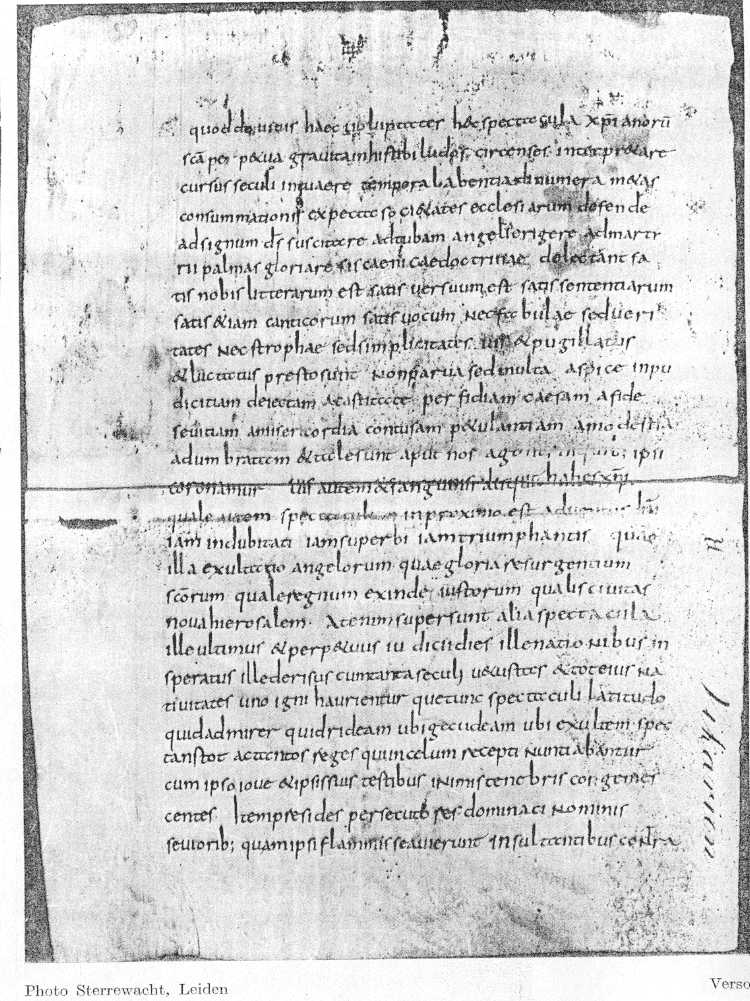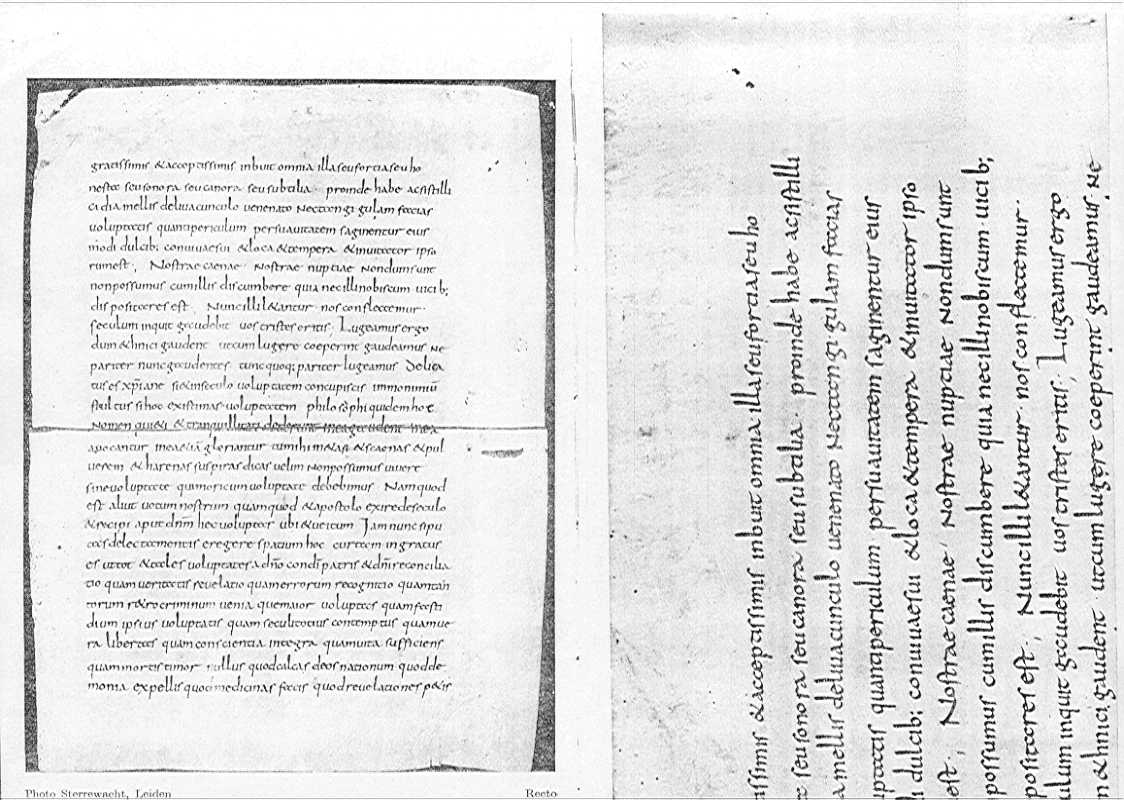|
A FRAGMENT OF TERTULLIAN'S DE SPECTACULIS By G. I. LIEFTINCK It is now the second time that Mr. A.-P. van Schilfgaarde, the energetic archivist of the State of the province of Gueldre, has surprised me by sending me fragments of a Carolingian MS. Each time they were endpapers or chemises which had been employed to protect the bundles or the registers, pertaining to municipal or personal archives, in the keeping of the central depot. 1 Thanks to the comprehension of this benevolent colleague it is possible now for me to communicate a quite sensational find. I am all the more happy that, since this publication can appear in Vigiliae Christianae, everyone will understand that the communication of this fragment could not be better placed, since it concerns a vestige of a codex of Tertullian which actually dates from the beginning of the 9th century. It is a leaf cut into two of his treatise De spectaculis, one of the rarest works of this author. The baronial family of Pallandt, hereditary owner of the files of the house of Keppel, had the kindness to surrender to us on loan these two pieces of parchment; they will be placed at the disposal of paleographers and philologists in the cabinet of the manuscripts ------------------- 1. The first time it was a chemise for the accounts of the table of the poor (Provisorie) of Doesburg of 1558-' 70. Mr. A.-J. van of Ven, formerly archivist-assistant of the province of Gueldre, had found it while making an inspection and Prof J. - F Niermeyer of Amsterdam drew my attention to it. The fragment has been deposited on loan at the library of Leyden (B P. L 2507). It is part of a leaf of an Old Testament of the beginning of 10th century (P) of a very beautiful penmanship showing the influence of the school of Tours (here and there is to be found a semi-uncial of Tours). Undoubtedly this fully-realised writing must be assigned to a very significant milieu. Perhaps the perfect rhythm and the round forms prefigure the magnificent style of the Italian mss. of the eleventh and twelfth centuries. |

